Leuven, Louvain, Lovaina
- Address: Leuven, Belgium
- Tags:
 What to see Leuven,
Leuven,
Belgium
What to see Leuven,
Leuven,
Belgium
- Telephone: + 32 (0)16 20
- Website: www.leuven.be
Lueven, the old Flemish capital
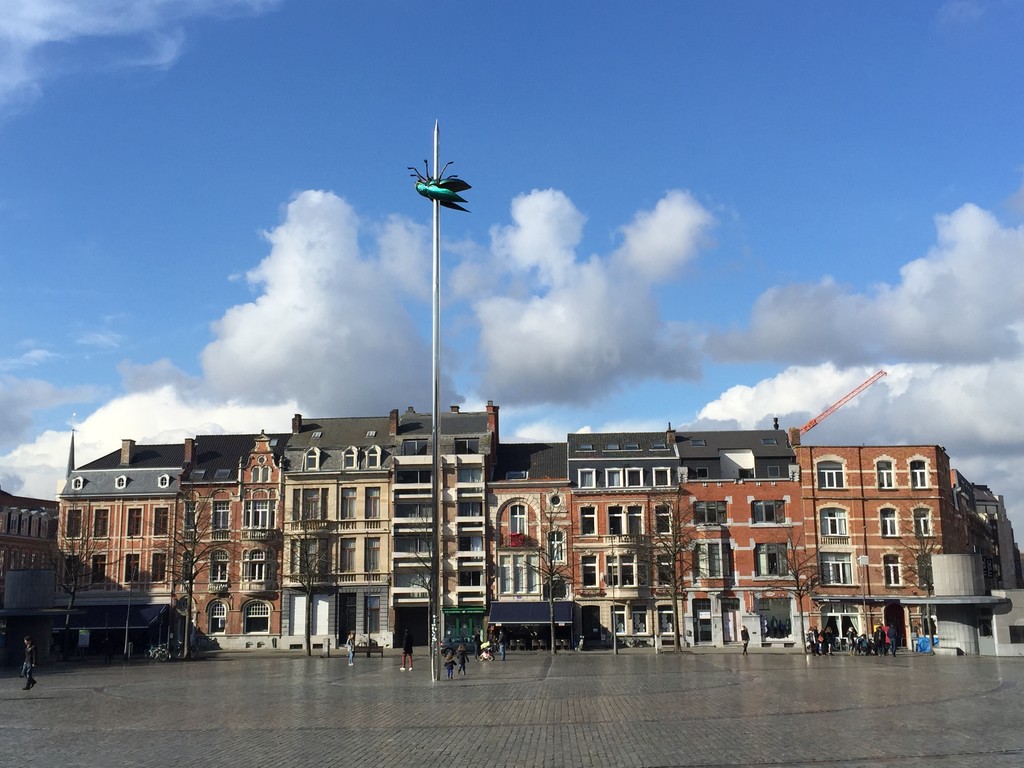
Leuven (the Flemish and English name) is a small city belonging to the Flemish region of Belgium (it is Louvain in French and Lovaina in Spanish), some 20-25 kilometres towards the west of Brussels. It is easily accessible by train from the stations "Gare du Midi", "Gare Centrale" and "Gare du Nord", where there are trains to Leuven approximately every half an hour. The price at the weekend is €6. 20, otherwise we would have to pay €12 for a return ticket when the journey is only 20-25 minutes long. So, the best thing to do is to visit Leuven on the weekend. It has a population of around 90, 000 inhabitants and it is the old capital of Flanders.
In my opinion, Leuven is one of the most enchanting cities in Belgium. We are all used to seeing cities like Brussels, Ghent and even Antwerp being over-promoted, but from my point of view, Leuven is also worth the same popularity, too. All of the Medieval treasures that the city holds makes it a strong competition for the first three cities I mentioned. Without going much further, the magnificent 15th century town hall already deserves a visit!
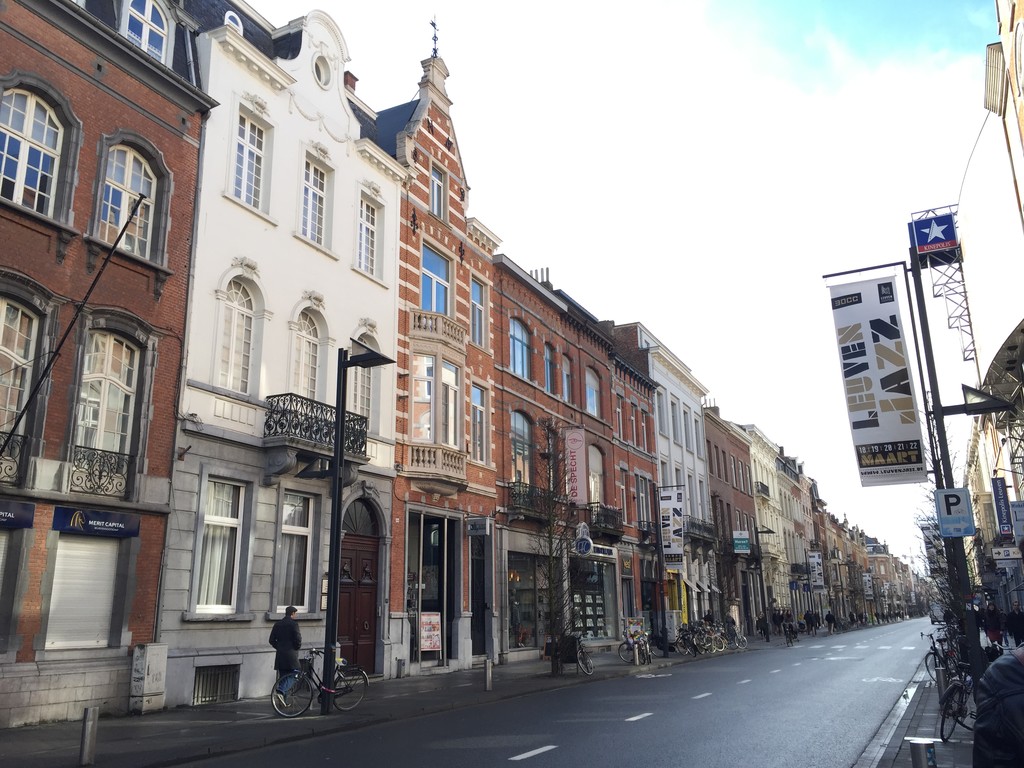
Contradicting other Flemish cities that are located in the low grasslands, like those I have already mentioned in my first paragraph, Leuven can be found situated on a more mountainous terrain. Part of the city sits in the valley of the river Dyle, like with Brussels and how it is surrounded by the valley of the Zenne river. On the outskirts of Leuven we can find the Heverleebos Woodland and various green areas that belong to the small locality of Aardenburg, which also has an ancient Medieval abbey in it, called Saint Bavo.
The city of Leuven is also home to an important university: The KU Leuven (Catholic University of Leuven). KU Leuven is one of the oldest Catholic Universities in the world, founded in 1425 with more than 25, 000 students from all over Belgium and abroad. The city also has a brewery of the famous Stella Artois beer - the only beer with origins in Leuven, produced by the company INBEV. This brewery is located in the outskirts of Leuven, near the canal that runs towards another Belgian city, Mechelen. Due to the reduced size of Mechelen, it is not necessary to take any form of transport to get to the centre of it and all of its tourist points of interest.

The young people give Leueven a student-city kind of vibe, it is animated and creative, making it one of the main student cities, along with the city of Ghent, in the whole of Belgium. This atmosphere contributes to the location of the Old Market in Leuven: the square with one of highest concentration of bars and pubs per square metre in the whole of Europe!
It is now the time to explore Leuven a little more in detail, specifically the history of this urban relic... The first proof we have of this city existing is the appearance of its name in different written historical artefacts in 884, the year in which the Vikings sacked the city and secured themselves in an old fort on the river Dyle, name the "Luvanium" in Latin. Then in turn, they were conquered by Arnulf of Carinthia in 891, and then the Counts of Louvain arrived, who were also the ones to acquire the domain of Brussels. In 1190, the Counts occupied the title of "Duchy of Lower Lorraine" and the right to govern the central part of the area was given to them, the area now known as Belgium.

Since then, Leueven developed into an important administrative and commercial centre, with it being more or less the capital of the Duchy of Brabant. A wall of stone was built around the city and the cloth trade became the main source of wealth and prosperity in Leuven. However, the 14th century was a significant turning point for Leuven. The cloth trade lost its influence and Brussels aspired more and more to be the capital of the Duchy of Brabant. At this time, the Duchy of Brabant, or the Duchy of Lower Lorraine, had moved their permanent residence from Leuven to Coudenberg Hill in Brussels. However, the richest people in Leuven, unaware of their city losing its economic and commercial influence, continued to spend, without seeing that Leuven was no longer as prosperous as she once was. Between 1360 and 1383 the trade unions for the cloth industries, lead by mayor Pieter Couthereel, continued to oppose the policy of a "happy few", which resulted in numerous uprisings against the City Council of Leuven.
Although Leuven had lost its role as a leader by the start 15th century, the city would be witness to some great events over the next century. In 1425, the Duke of Brabant John IV, founded the University of Leuven that, until today, is one of the most important Catholic Universities in the world. Some decades after its establishment, it already had more than a thousand students. In the 16th century, some important humanists and scientists helped to spread the word about the fame of the University of Leuven to the rest of the world: Erasmus de Rotterdam, Mercator, Jansenio, Vesalio, and others. Furthermore, between 1439 and 1468, one of the most splendid examples of Gothic architecture in the world was built: the Leuven town hall.
Since the middle of the 16th century, Leuven did not escape the fate of most of the Netherlands: devastating religious wars, the plague, and starvation all took place under a faltering population and a reduced commercial and industrial trade. Furthermore, during the period of Austrian leadership, the Holy Roman Austrian Emperor Joseph II moved the University of Leuven to Brussels and ordered many monasteries to be closed down. The monasteries that continued to exist after this point were sacked during the French occupation of 1794 and 1804. It was only after Belgian independence in 1830 that the University of Leuven regained its old importance once more.
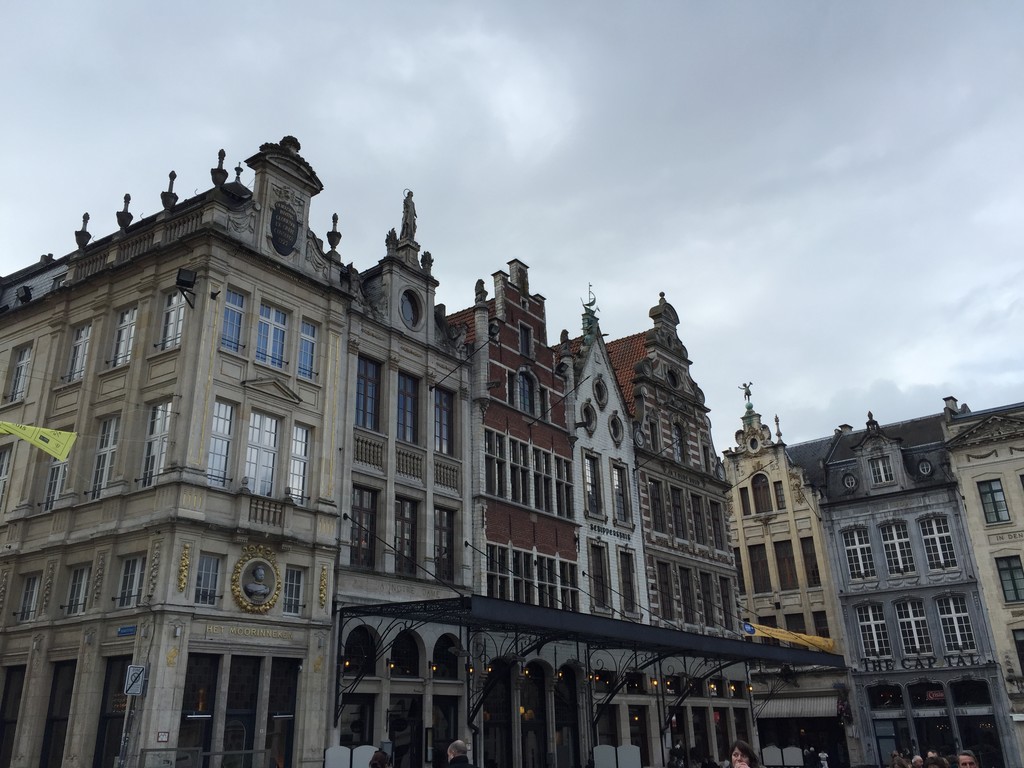
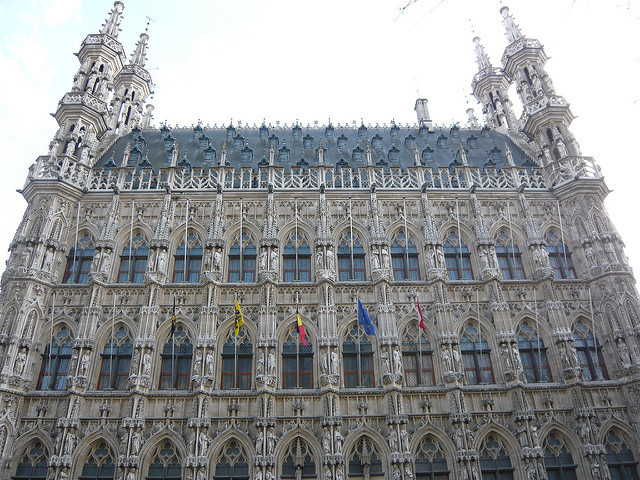
The 20th century proved to be the most devastating for this city. During the First World War the centre of the city was burnt by the German occupants. After the war, the city was meticulously reconstructed. The Second World War brought strong bombings with it. Until the decade of the 1960s, the University of Leuven had been bilingual (French and Flemish), but during 1966 and 1968 the Flemish movement brought a separation from the University. This gave way to student protests (of both sides, pro-Flemish and pro-Francophone) and the only way to put an end to this situation was the Belgian government and the University authorities dividing the University. The part that spoke Flemish stayed in Leuven, and for those students who spoken French, a new campus was constructed in the new city of New Leuven to the south of Brussles.
Since the middle of the 1990s, it seems that Leuven has regained its role as the capital of Brabant, a role they lost in the Middle Ages. The old Belgian province of Brabante has been divided into two parts: the Flemish Brabant (with Leuven as its capital city) and Walloon Brabant (with Wavre as its capital city).
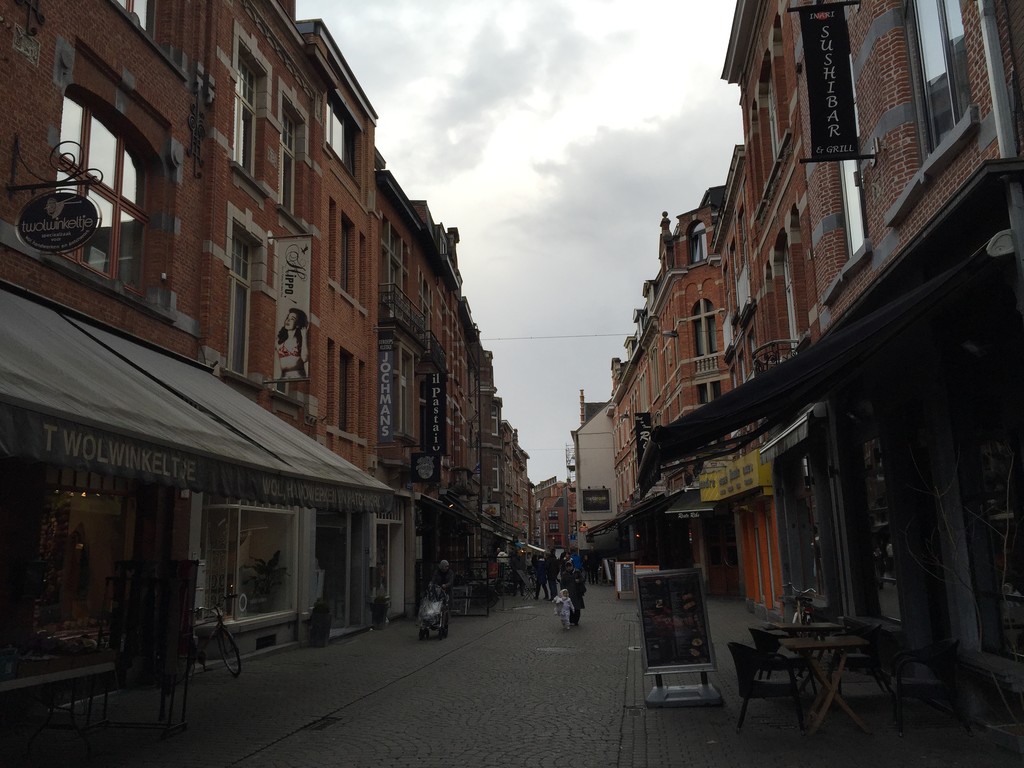
Leuven has many destinations of interest, and I would like to describe them a little bit now so that you have an idea about what to visit. Don't overlook any of them!
A statue of a very curious person name "Fonske" which represents a student reading a book and throwing a glass over his head (we can guess that it is full of beer). From a distance, it looked like Dobby the Elf from Harry Potter, but when I got closer I could see that the face looked nothing like his. It can be found in the rear part of St Pieter's Church. The name "Fonski" is a Flemish name, coming from Alfons, or Alphone and the Latin word "fons" means fountain and is where the nickname came from. It is understood that it represents student life that runs through the city and how it is necessary to try to unite and give the same importance to studying and reading books as to the traditional Belgian activity of drinking beer.

On walking through the city, we realise how well conserved all of the old Flemish buildings from the 17th and 18th century are. This is due to the reconstruction that took place after the World Wars, as I already told you during the historical section of this article.
The Leuven building renowned for its excellence and which highlights architecture is the spectacular town hall (or Stadhuis in Flemish) that you can admire from the main square or the Grote Markt. It is pedestrianised and is also where the St Pieters Church is located just in front. The town hall is a jewel of the Brabantine Gothic style with gorgeous decoration on its walls that remind us of the Medieval period of history. Its construction started in 1439 by the architect Van de Vorst Sulpicio, who died before it was finished. It was the architect called Keldermans that continued it his work, as well as Mathijs de Layens. The work finally finished in 1497.

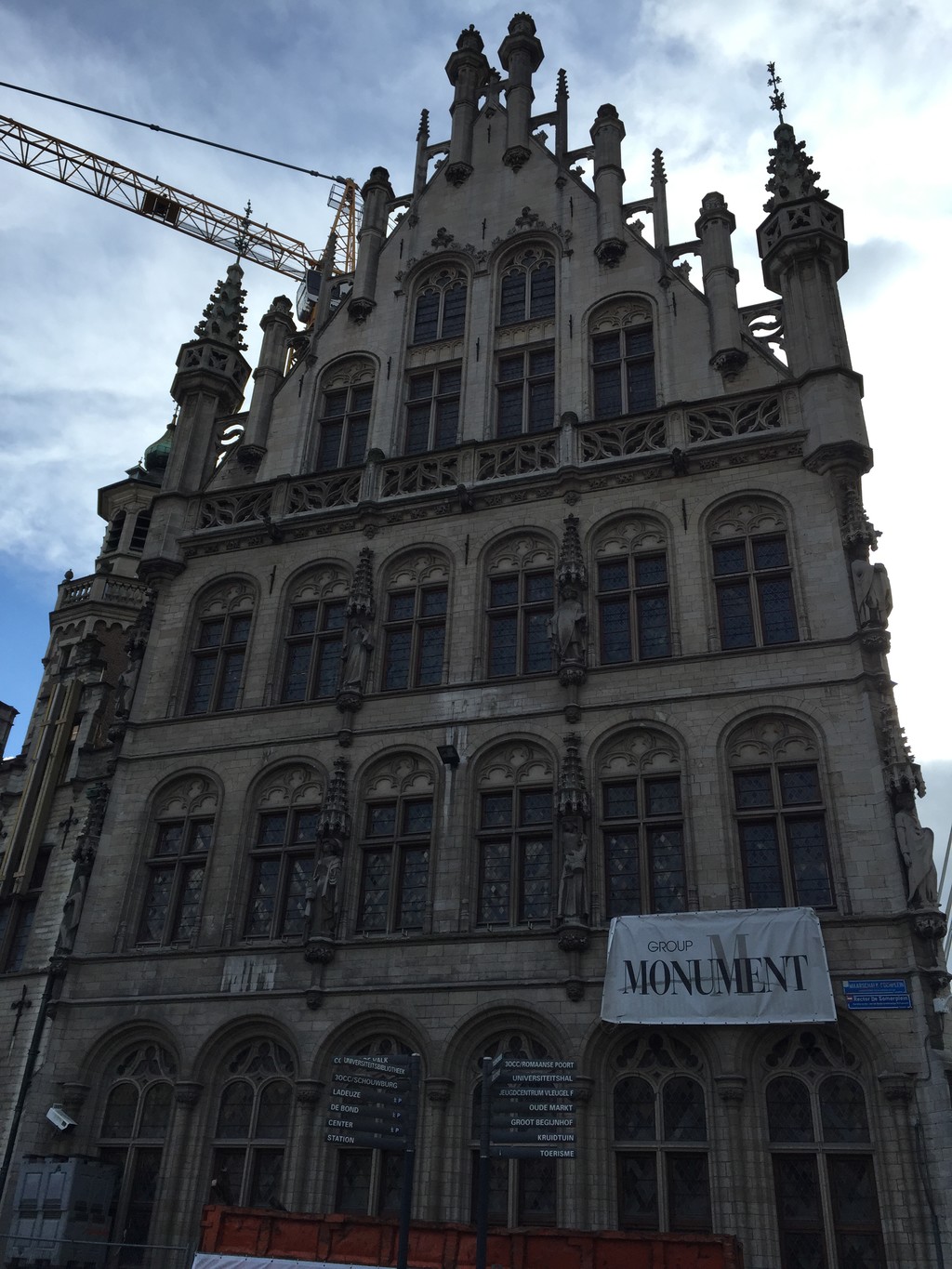
In 1706 they added stairs to the entrance. The town hall was renovated for the first time in the 19th century. During the restoration they added new Neo-Gothic elements to the town hall. The first restoration was carried through from 1829 until 1941. During the second half of the century, they added statues that adorned the main façade. This was because of the French writer Víctor Hugo who, during his stay in Leuven, insisted on the statues being added in order to fill the empty gaps because an amazing building like this one could not be left unfinished. There is a total of 236 statues (made in the 19th century) that represent artists, scientists, historical people, and other people that played an important role over the history of the city. In the upper floors the Counts of Leuven and the Dukes of Brabant are shown. From 1893 to 1907, the beautifully sculpted pedestals, on which the statues stand, were also renovated. During the bombings of 1944, the town hall suffered a considerable amount of damage that prompted a new renovation campaign from 1962 to 1983. In the decade of the 1990s the building, which had become very black, was completely cleaned and renovated.
In front of the town hall, and in the Grote Markt, is the impressive church of St Pieters or St Peters, of Gothic style, although less elegant than the also Gothic, neighbouring town hall. The place where it stands today was first home to a smaller Romanesque church, the new Gothic church was built by the same architects who built the town hall.
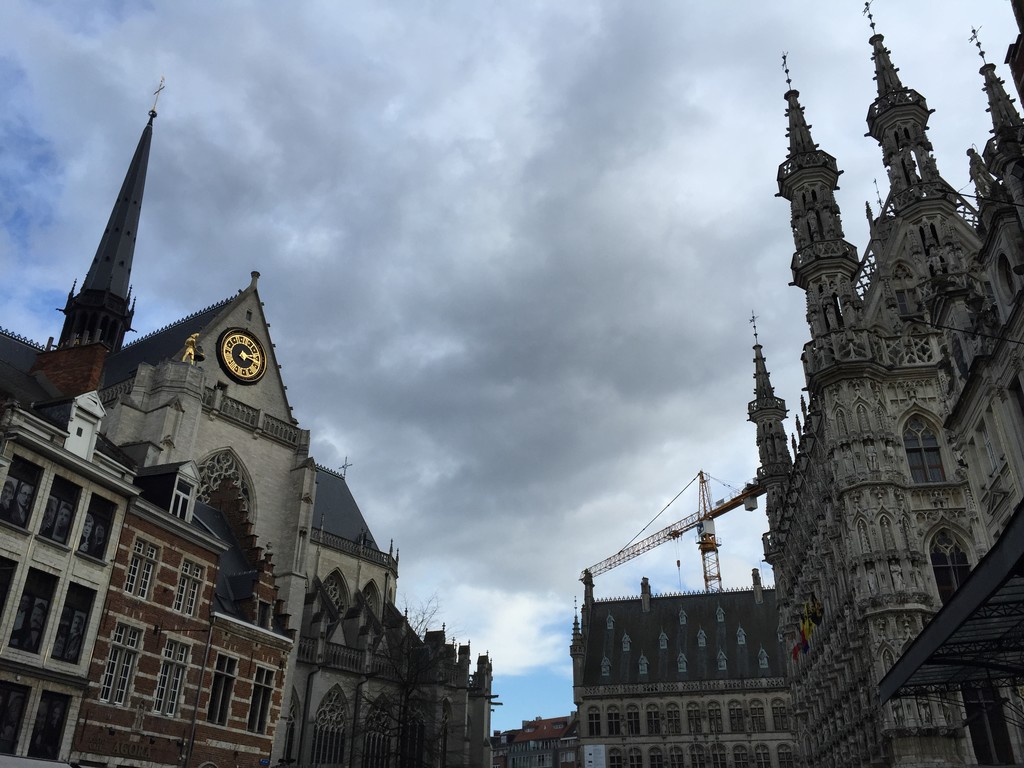
At the end of the 15th century they completed the church's nave. In 1507, they started building the towers. This important part was left unfinished. The floor underneath the church ended up being too unstable to support the weight of the central tower, which had to be brought up to 165 metres high. At the start of the 17th century the tower had to be partially demolished to avoid a huge destruction of the church. During the 19th century, different renovation campaigns were carried out, although the church suffered a lot of damaged from the bombings of the Second World War in 1944. In 1922, they completed the restoration of the Western façade and in 1998 the choral part, although they are still yet to finish restoring the interior.

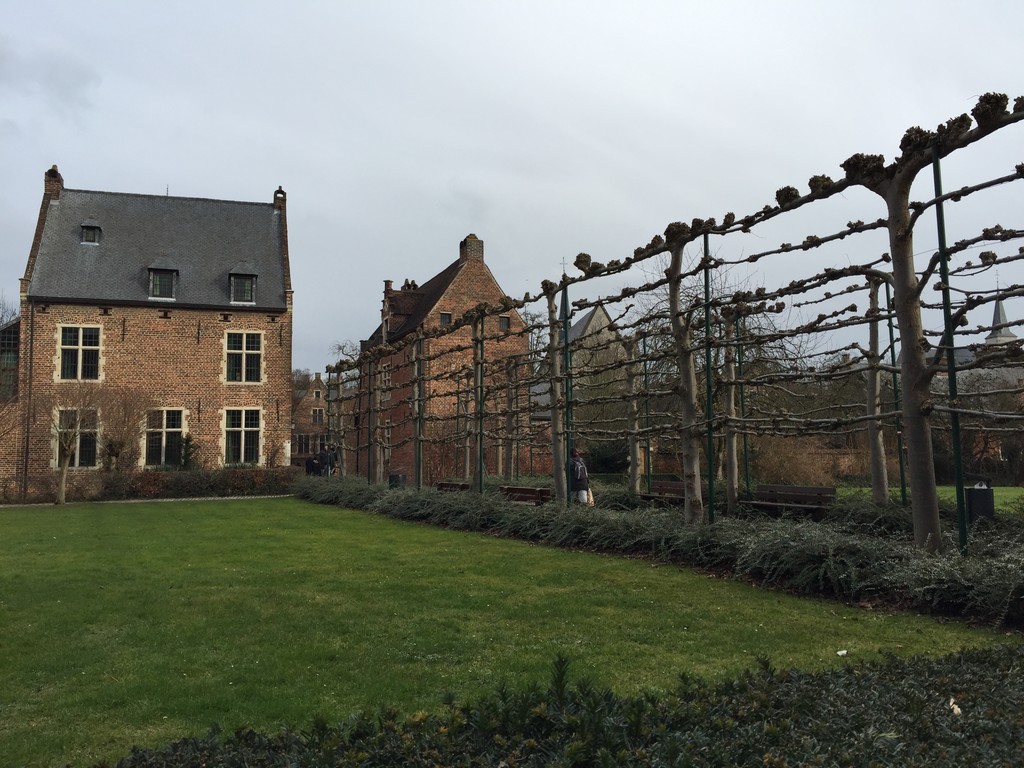
Another complex that is really worth a visit is the "Groot Begijnof" (the Groot Beguinage), a UNESCO Cultural Heritage Site close to the river Dyle at the south of the centre of the city. It was founded by the lay sisters in 1232, although the majority of the houses date back to the 17th century when almost 300 lay women lived here until 1830. Since 1962, the Beguinage has been property of the University of Leuven (KU Leuven) who restored it and turned it into accommodation for students, professors and foreign guests, as well as University collaborators. This "city inside the city" testifies to a unique aura of feminine spirituality and community formation during changing times and circumstances. Several of the photographs I took show how it has been fitted to be student housing.
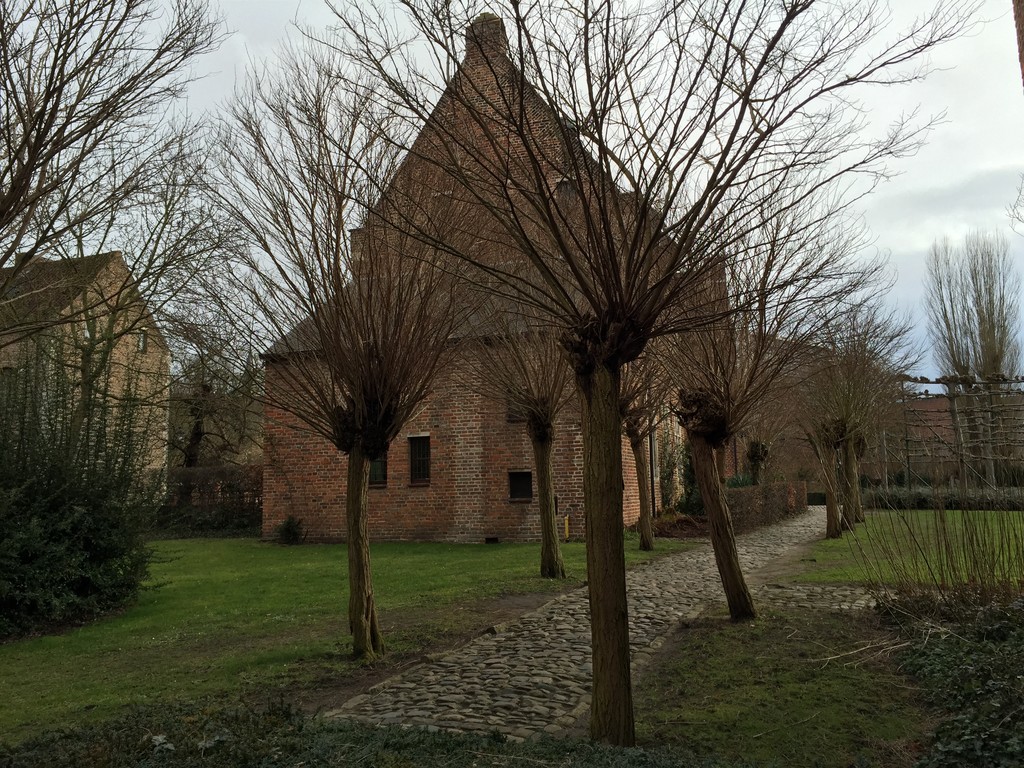
Also note the importance of the Municipal Library, in the Monseigneur Ladeuzeplein. The impressive Flemish Renaissance-style building is undoubtedly the most striking, after the town hall. It was built between 1921 and 1928 and was designed by the American architects Warren and Wetmore. It was built thanks to donations from colleges and universities in the United States. It replaced the old university library which was destroyed in 1914, although the current building was damaged by fire in 1940. The beautiful tower that belongs to the library is a "Beiaard" or set of bells and was also donated by the Americans.

Another important church is the Saint Michael Church, belonging to the Jesuit Order. It was erected from 1650 by the Jesuit of Antwerp: Willem Hesius. The church was completed in 1671 and devoted to Our Lady of the Immaculate Conception. After the Jesuit order had been abolished by Pope Clement XIV in 1773, the church became the Parish Church of St. Michael. In 1944, the church was almost completely demolished, only the façade survived. The façade is inspired by the Gesu Church in Rome, and is one of the Baroque masterpieces of Belgium. The interior of the church reminds us of the Gothic style, but the decoration is undeniably Baroque. The pulpit, made in 1765 by Du Roy, comes from the Cathedral of Saint Michael and Saint Gudula in Brussels.
And of course, we can't forget about the Oude Markt, the Old Market, the party square known for its excellence in Leuven. It is made up of a large rectangular square filled with bars, pubs and restaurants with approximately more than 40 local pubs with terraces. In many of the cases of these places, they do Leuven delicacies, especially when summer arrives. This places has taken the name of "the largest bar in Europe".
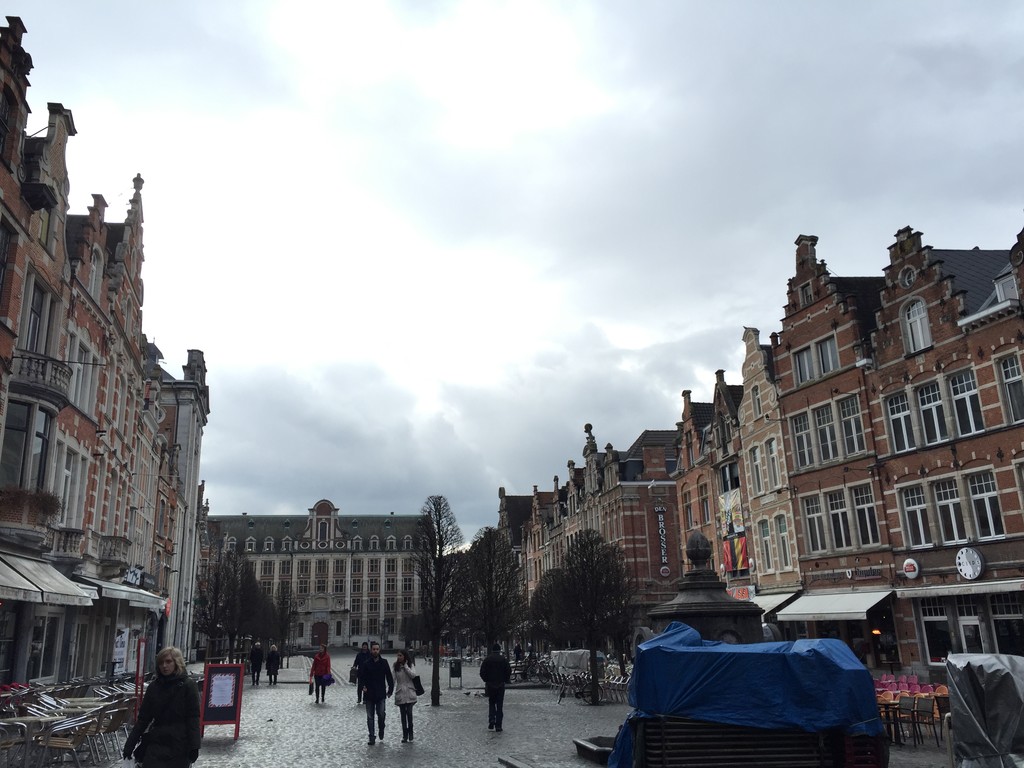
Since 1150, the residence of the Counts of Louvain has been established here, which is why the market was established in its vicinity. The square was destroyed during the First World War and was later rebuilt by changing the market stalls for the local places we find today, although they maintained the Flemish architectural style of the houses with slate roofs that were there before the bombings.
It is also a meeting place for many of the events that take place in Leuven, such as the traditional parties welcoming new students during the month of September (Freshers), the "macroconcerts" in February or the "Marktrock", which is a large music festival that takes place during the summer every year since 1982. Artists such as The Pretenders or Status Quo have performed here before. Other events include the "Beleuvenissen", which is a free concerts festival that is held on every Friday in July, or the "Hapjje Tapje" gastronomic event held on 31 July with loads of food and beer stands.
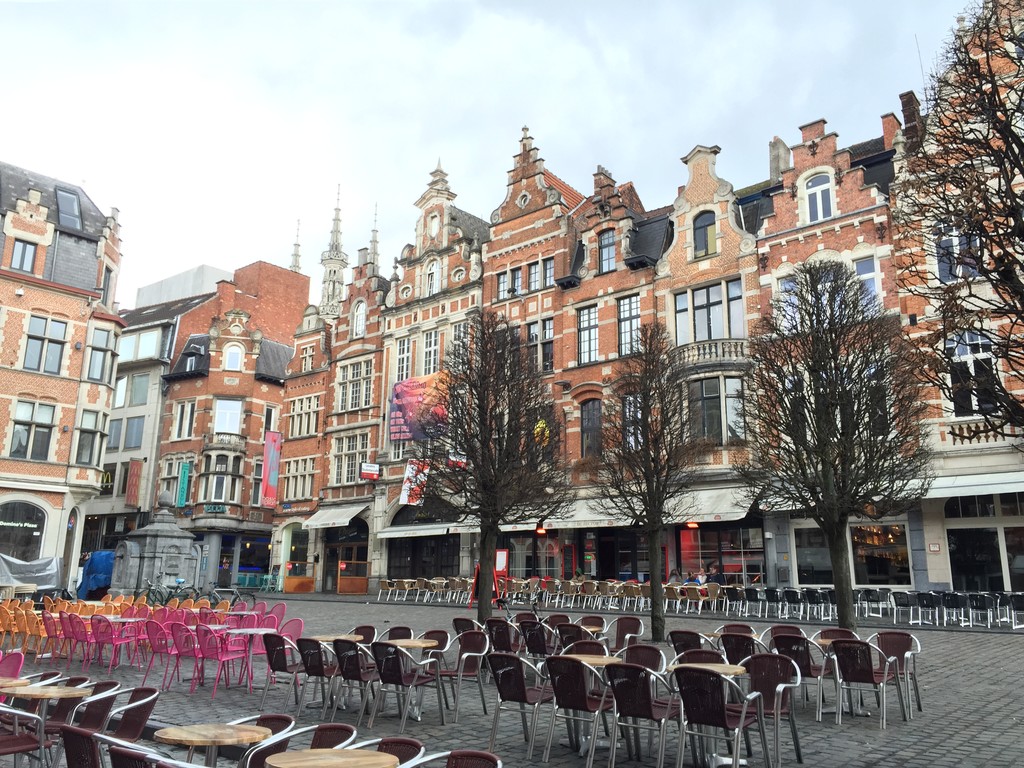
Without a doubt, it is the most curious place I found and I took the opportunity to admire the square for a few hours. First, for lunch we chose a very welcoming and charming Mexican restaurant that was practically in the center on the right side, and then we chose another place to have a beer a couple of hours later.
I have mentioned the most culturally fascinating parts of Leuven that you cannot miss if you are on a day visit to this unknown Flemish wonder. However, without a doubt, make sure you get lost in the streets and then you will end up improvising and coming across markets where you can taste so many cheeses and sweets. Or, chat with locals who will tell you that, until a few years ago, there was the ugliest tree in Leuven here, but it was so ugly that it was struck by lightning and destroyed, and now there is only a hole where it once was...
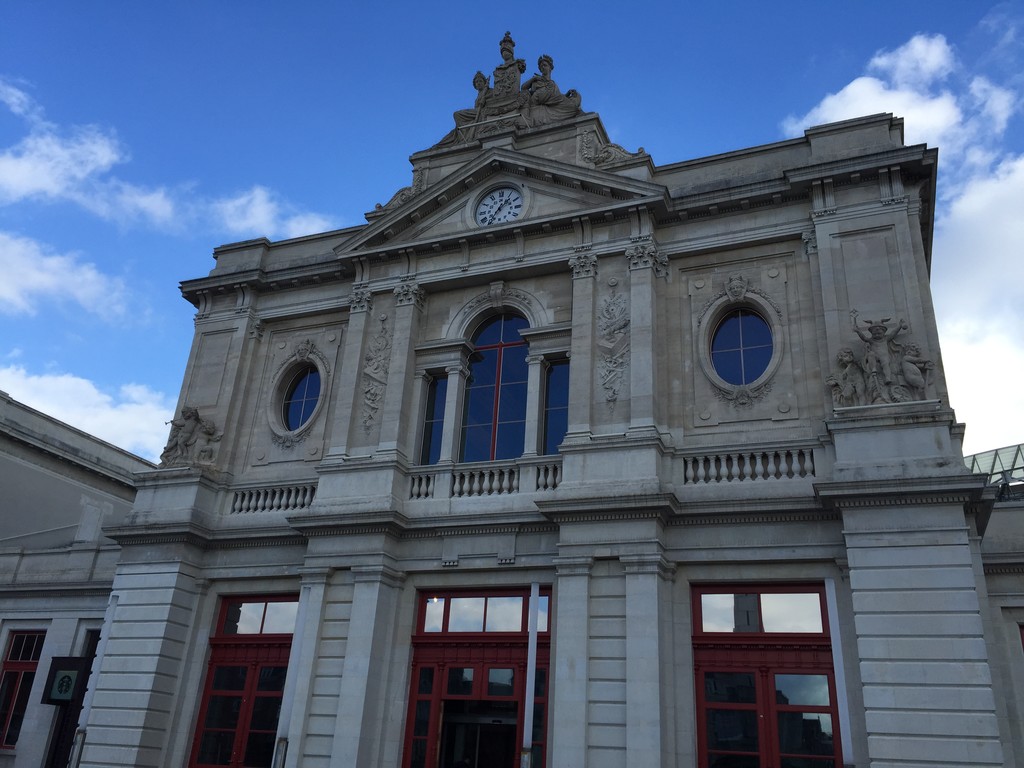
If you are looking for more information about where to go on Erasmus, this link will help you a lot.
Photo gallery
Content available in other languages
- Español: Leuven, antigua capital flamenca
- Italiano: Leuven, antica capitale fiamminga
- Polski: Leuven, była flamandzka stolica
- Français: Leuven, ancienne capitale flamande
Rate and comment about this place!
Do you know Leuven, Louvain, Lovaina? Share your opinion about this place.


































